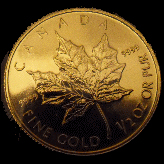Making your First Silver Trade
by Jerry WhiteIn contrast to the gold market, the silver market is dominated on the buy side by speculators and hedge funds — historically by American speculators. This reflects the fact, among other considerations, that Americans could not legally own gold until 1975 and so don’t have the “feeling” for it that they have for silver. Americans started hoarding silver coins for investment purposes when the US Treasury stopped minting them in 1964, and have been trading silver futures since 1963.
Silver market volatility
Nearly everyone over 45 remembers the lines of people who turned in their silverware and silver coins in 1980, when an attempted corner of the silver market by the Hunt brothers of Texas resulted in prices rising from about $6 at the start of 1979 to $50 in early 1980. Prices came back to earth (to $11) as a result of refining and delivery to the market of huge quantities of silver sold by the public to coin dealers.
Silver market volatility can be outrageous, with the price rising and falling over a dollar on some days. This makes it very hard for speculators (non-professionals) with high-leverage futures positions to stay in the market, and they are often wiped out with large losses in days or even hours. If gold can correct by 4 or 5% over a week or so, silver — unfettered by the stability of large participants at the fixings — can fall by twice that. And it can rise at that rate as well.
Volatility also makes for a rollercoaster ride for a long-term investor and makes it difficult even to make an entry into the market. But if the investor fails to buy at all in a market whose long-term trend is up, then he or she will miss the opportunity to profit from the long-term price rise — or to hedge the loss of purchasing power as the US dollar’s value is eroded by inflation.
Use resting orders entered in advance
I suggested a kind of dollar averaging method to get into the gold market. While the same strategy can sometimes work with silver, large and fast intra-day swings make the strategy less reliable. As an uniquely American commodities market, in which the Comex floorbrokers and so-called locals can control the price over the very short-term on the trading floor, and in which very large sell orders from bullion banks with concentrated short positions make sudden appearances, you can see that the silver market is totally unpredictable from minute to minute.
In this market the leverage of the futures market is especially dangerous. It is less risky to buy physical silver ingots, rounds, coins or ETFs. A method that seems to work for a long-term investor to get in and maintain a position without regrets is to buy on weakness. If you buy an ETF, place resting orders below the market, ready to be touched off when the floorbrokers or bullion banks “gun for the stops”; that is, when they take the market down with the intention to set off stop loss orders below the market, flushing weak holders out. You may call it manipulation; nevertheless it is a feature of many actively traded markets whose volume is somewhat modest. If you buy physical coins or ingots, wait for a selloff to place your order, then hold your position for the long term, even if the price subsequently tumbles 10%, 20% or more. As long as the bull market in precious metals lasts, the price will recover and continue to rise after the correction is over. Just don’t buy more than you are comfortable with, even if the market sells off. Buying high and selling low is not a formula for long-term happiness as an investor.
Options
There are additional strategies for investing in silver, using futures options and neither as comfortable for most investors as buying physical silver and holding it for the long term. These futures options strategies are suitable for those investors who want to trade and are prepared to risk much of their investment capital. In one strategy, you buy silver futures and at the same time buy a somewhat out-of-the-money put option on half the quantity of silver bought. This reduces the volatility of your investment significantly and may let you sleep at night. The cost of the option premium will reduce your potential profit, of course, but that is the cost of reducing your risk.
Another strategy is to buy out-of-the-money calls instead of buying silver. You have a known cost (the option premium). The problem is that you may be right on the direction of the market, but still lose your entire investment if the option expires before the market rises enough to reach your strike price. Long-dated options of six months or more work better than short-dated options. There are also very long-dated options called LEAPs. Some investors buy LEAP calls on the SLV ETF and hold them to near expiration, then roll them a year forward by selling the ones they own and buying new long-dated calls to maintain their position. This would be a very successful strategy if the silver bull market were to continue.
If you are interested in learning about futures and options, there are an Options Pricing Tutorial and Futures & Options Glossary on this site. Find the two links in the right column of the home page.
A third strategy may be more suitable for your first trade in precious metals. For those who don't have the stomach for buying silver: buy gold instead.
Maintain a Core Portfolio
Here’s an essential strategy for those who absolutely have to trade the wiggles in the market, even though they may initially have expected to hold their precious metals position forever: Separate your portfolio into two equal parts. Invest one half in your favorite unleveraged silver or gold vehicle and leave it alone regardless of market prices; it’s your Core Portfolio. Trade the other half to your heart’s content. Keep track of which portfolio makes more money (or loses less) over the long term.
Will you make money?
No one can tell you that. If the market price rises between the time you buy and the time you sell, you will make money. If it falls, you will lose. Prices will rise and fall along the way.
Buying silver entails risk. Silver and gold are different and may be suitable for different investors. I am not advising you to buy. I am providing you with more information about the market than you had before. This information is for long-term investors who can afford to lose much of their investment stake. Certainly if you don’t have enough money for next month’s rent, you have no business making any sort of investment.
One additional caveat: Do not become so enamored of silver — or of any investment — that you go overboard with your purchases. Depending on your situation, limit your stake in precious metals to a maximum of 10% to 30% of your investment portfolio. Never put all your eggs in one basket, and never borrow to buy precious metals. My investor’s guide includes specific recommendations for investors with different risk-reward profiles that will apply to your first silver trade.

Precious Metals Investor’s Guide from TradersGame.com
To learn to invest in gold and silver, avoid pitfalls and save money by buying the form that is appropriate rather than one a salesman wants to sell you, read our precious metals investor’s guide, How to Buy Gold and Silver Today. Read it tonight and start protecting your purchasing power tomorrow.
Articles
Who Sets the Prices of Precious Metals?
Why a Rising Gold Price is Bad News
Hyperflation and Gold: Losing Faith in the Dollar
Invest in Gold to Preserve Your Purchasing Power
Buying Gold to Meet your Investment Goals
Pitfalls to Avoid When Investing in Gold
Making your First Silver Trade
Investing in Platinum-Group Metals
Will the US Government Confiscate Your Gold?

